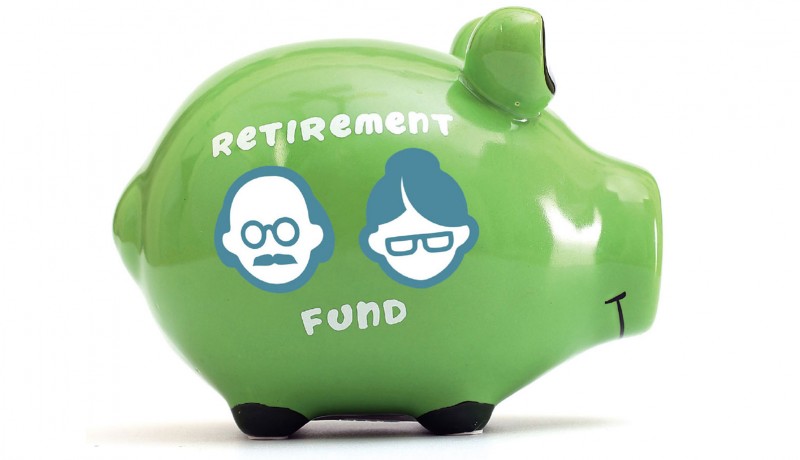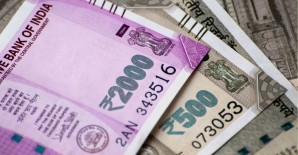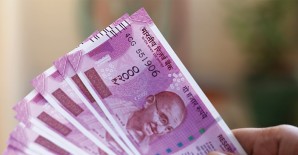
Money

With the market offering a bouquet of opportunities, silvers must be wary of where they invest, says Priya Desai
The year gone by was largely marked by some anxious moments, with a downhill movement in the interest rates of a variety of fixed deposits (FDs). Silvers who prefer to park a major portion of their life savings in FDs—considering the safety and security associated with them—unfortunately end up spending sleepless nights on the eve of the policy review of the Reserve Bank of India (RBI), checking which way the interest rates are headed. This apart, as soon as the prospect of reinvestment of maturing deposits nears, the worry about plummeting earnings on FDs begins to dampen their spirits.
Preference for FDs
The rationale for investing in FDs is pretty simple: the top priority is an assured income for a particular period at a predetermined frequency. It is premised on the safety and security of the capital invested and a fixed rate of interest during a fixed period of maturity. Absence of fluctuations is the key factor, making it a preferred financial instrument, particularly for silvers.
The flipside of this bias towards low risk and security is low liquidity and returns compared to some other financial instruments. The interest rates have remained at an attractive level during the past couple of years. However, with a fall in the inflation rates, the RBI brought about changes in the interest rate policy. In common parlance, declining rates of interests were set, both on deposits and loans. Now the downtrend in interest rates appears to be a confirmed trend and a grave matter of concern for silvers.
Be cautious
Most silvers are fairly conversant with the general features of FDs, though at times they ignore the nitty-gritty and fine print.
Recently, I came across a case wherein a silver investor forgot the maturity date of the FD she had invested in, remembering it only after a few months. What was shocking was that the bank did not bother to inform her, though it had her telephone number. Though the amount was lying with the bank, she did not get the interest of 4 per cent per annum for the extra period it was there. The moral of the story is that customer care gets mere lip service in India. Silvers have to be watchdogs of their own FD investments.
Most silvers prefer to invest in nationalised or private-sector banks. However, with the financial landscape having widened and deepened over the past decade, there are ample opportunities for investing through other financial institutions. It’s to be noted here that despite increased vigilance by the RBI, the economic situation in the country has undergone rapid changes, not necessarily in a favourable direction.
A number of leading nationalised banks have been found to have built large non-performing assets (NPAs) in the form of loans extended to prime corporate clients, leading to weaker balance sheets for themselves. This has, obviously, made silvers apprehensive about the safety of their FDs.
Different avenues
One should be clear about the differences in the various avenues available for investing in FDs. Though banks are permitted to determine the interest rates they offer, the rates also differ as per the maturity period of investment. I recollect that in 2011, Canara Bank offered an FD investment scheme at an attractive rate of 10.25 per cent for a period of eight years. In retrospect, it was a wise decision to invest for such a long period when other banks limited the maturity period to a maximum of five years. A number of cooperative banks are very active in garnering FDs from silvers by offering higher interest rates than nationalised banks.
An investor shared his experiences with the Rupee Cooperative Bank and CKP Cooperative Bank. With these banks having gone bust, they aren’t permitting account holders to withdraw the amounts either from savings accounts or FDs. During the past two years, this investor could withdraw only ₹ 1,000 every six months. The caveat of ₹ 100,000 insurance of FDs does not work in this case. A provision is available, however, wherein the investor can approach the RBI through the bank for a partial payment of bills such as medical or wedding expenditure directly to the service vendor. Given the delays in the system, this is just a palliative measure. It only serves to underline the fact that as a matter of abundant precaution, an investor should choose cooperative banks with sound balance sheets and professionally managed boards with a high reputation for financial probity.
Vigilance, the buzzword
Investors need to be vigilant as it is their money at stake. Large corporate houses and non-bank financial companies (NBFCs) net investors with their attractive FD schemes through agents. Till a couple of months ago, when banks were offering 9-9.5 per cent for three years, corporate deposits were quoting rates of 10.50-11 per cent.
Now, with the dive in bank FD rates, there has been a significant drop in corporate FD rates too. The key factor to weigh in while investing in FDs is to look for a sound company with high ethical standards of governance. Mahindra and Mahindra, Bajaj Finance, Sriram Transport and Finance, Tata, Dewan Housing Finance, etc, are some reputed corporate houses offering attractive rates for FDs. The differences in FD investment in nationalised banks—where the Government is the guarantor in the background—and a corporate house, where only the reputation of a company and the investors’ assessment are the key factors, are shown in the table. Company deposits are rated by CRISIL and ICRA, the leading rating institutions in the country, and these ratings are mentioned against the FD information.
A watchful investor should consider these ratings as indicators of risk and reward before finalising the selection. It is also desirable to opt for a medium-term deposit rather than a longer tenure.
The Senior Citizen Credit Scheme (SCCS) is one of the attractive schemes where ₹ 1.5 million (₹ 15 lakh) can be parked at 9.3 per cent for a period of five years. While liquidity without penalty is not a feature of this FD, a low risk factor and a reasonably good return under the present circumstances make it score over other FD schemes.
The Public Provident Fund with a 15-year lock-in period is also a good avenue for investing spare funds if there is no immediate cash flow requirement. The rate of interest so far, announced annually, exceeds 8 per cent, and interest on interest cumulatively increases the sum invested.
Windows of opportunity
Identification of investment opportunities needs to precede the FD maturity date. Based upon safety, liquidity, and the risk profile of the investor, a variety of mutual funds, arbitrage funds, tax-free bonds, etc, are available. If the decision takes time, money can always be parked in savings accounts with a switch-in and switch-out facility or a Max-Saving account in banks such as the HDFC. This account offers the facility to invest the excess cash in the savings account in an FD with the benefit of liquidity through switch-in and switch out. This type of FD earns a higher interest rate than a savings bank rate. HDFC Bank’s website provides details about how the account works. Some other banks also offer similar facilities. An investor will be required to do a quick survey of some of the leading banks to maximise the benefits from money credited to their savings bank account. You can visit the following websites to scan updated information on FDs of varying durations and interest rates of various banks and make an informed choice.
In case of company and NBFC FDs, agents and brokers have updated data sheets and forms, indicating details about duration, interest rates, etc. However, do not forget to read the fine print.
A major dilemma
The list of banks, corporates and other FDs keeps expanding, making the task of monitoring more tedious and hunting for new avenues more agonising. Investors can, therefore, explore the option of tax-free bonds like IRFC that hit the market recently, with a maturity of up to 15 years or more, with a coupon in the range of 7.53-7.5 per cent.
If interest rates decline in coming years, such bonds entail capital gains. On the anvil are similar offerings. Over the past two years, there has been a decline from 9 per cent to 7.5 per cent in interest rates. Those who invested in these bonds two years ago continue to receive 9 per cent interest rate and enjoy capital gains, as the price of the bonds has increased, being related inversely to interest rates. These bonds are listed on the secondary market and can be sold at current market price.
Eyes wide open
Silvers need to keep their eyes wide open, widen their horizons and maximise the gains from their funds. The future is not promising in terms of offering a stable rate of interest, thus negatively impacting their incomes from FDs. The option is to search for a ray of hope that makes the financial kitty shine brighter than ever.
FD schemes of banks and institutions:
| A COMPARISON | Bank FD | NBFC FD, HFC FD | Corporate FD |
| Safety | Highest | Typically lower than banks | Typically lower than banks |
| Credit rating | Not required | Mandatory | Mandatory |
| Interest rates | Market-linked, lower than other FDs | Typically higher than banks but linked to credit rating | Typically higher than banks but linked to credit rating |
| FD tenure | A few days to 10 years | 1 year to 5 years | 1 year to 5 years |
| Options available | Non-cumulative and
cumulative |
Non-cumulative and
cumulative |
Non-cumulative
and cumulative |
| Coverage under DCGCI | Yes | No | No |
| Security | None | None | None |
| Loan against FD | Available at 0.5-1% over FD rate | May be available | Not available |
| Flexi/sweep facility | Offered by many banks | Not available | Not available |
| Frequency of interest compounding | Quarterly | May vary | May vary |
| Tax deduction at source (TDS) | On interest income of more than ₹ 10,000 for a PAN in one bank across branches | On interest income of more than ₹ 5,000 for a PAN | On interest income of more than ₹ 5,000 for a PAN |
| Tax benefit | Available on principal amount for long term deposits under Section 80-C | None | None |
| Availability | Always on tap | From time to time | From time to time |
| Renewal | Always possible at then interest rates | From time to time | From time to time |
| Nomination facility | Available | Available | Available |
| Employee FDs | Available; slightly higher interest (up to 0.5%) may be offered | Available; slightly higher interest (up to 0.5%) may be offered | Available; slightly higher interest (up to 0.5%) may be offered |
| Special schemes for
senior citizens |
0.25% to 1% higher
interest rates |
0.25% to 1% higher
interest rates |
0.25% to 1% higher
interest rates |
| Shareholder FDs | No extra benefit | Slightly higher interest may be offered in some cases | Slightly higher interest may be offered in some cases |
| Source: www.myloancare.in/fixed-deposit | |||
apnaplan.com: Provides a monthly update on FDs of banks
www.bankbazaar.com: Provides facility to view individual bank rates on FD
www.myloancare.in/fixed-deposit
The author is an economist based in Mumbai
Photograph by iStock Featured in Harmony — Celebrate Age Magazine January 2016
you may also like to read
-
Pension hike
The stage is set for a manifold hike in pension for private-sector employees with the Supreme Court quashing a special….
-
Budget 2019: ‘A big let-down’ for silvers
The verdict is out: Experts Harmony-Celebrate Age spoke to termed Budget 2019 ‘a big let-down’ for silvers. The only saving….
-
Silvers seek sops in health sector in Budget 2019
Relief in the healthcare sector seems to be uppermost in the minds of silvers on the eve of the unveiling….
-
Cheer for pensioners
The Union Government has launched Sampann (system for accounting and management of pension), a pension management software to aid and….








